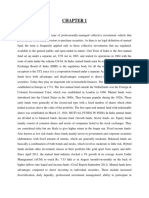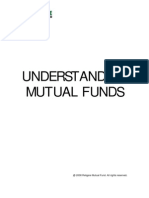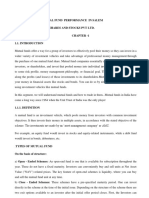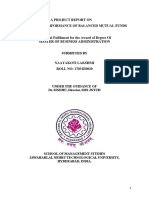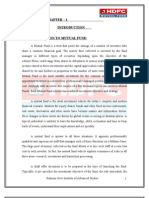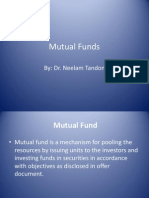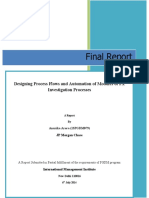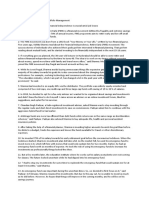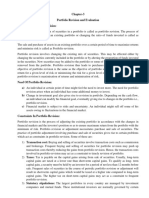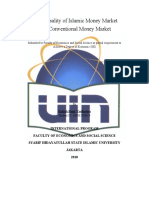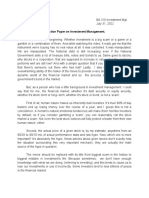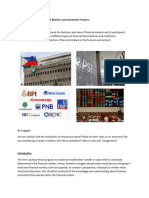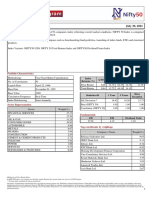AnandRathi
is a leading full service investment bank founded in 1994 offering a wide range of
financial services and wealth management solutions to institutions, corporations, high–net worth
individuals and families. The firm has rapidly expanded its footprint to over 350 locations across
India with international presence in Hong Kong, Dubai & London. Founded by Mr. Anand Rathi
and Mr. Pradeep Gupta, the group today employs over 2,500 professionals throughout India and
its internationaloffices.
The firm’s philosophy is entirely client centric, with a clear focus on providing long term value
addition to clients, while maintaining the highest standards of excellence, ethics and
professionalism. The entire firm activities are divided across distinct client groups: Individuals,
Private Clients, Corporates and Institutions. AnandRathi has been named The Best Domestic
Private Bank in India by Asiamoney in their Fifth Annual Private Banking Poll 2009. The firm
has emerged a winner across all key segments in Asiamoney’s largest survey of high net worth
individuals in India.
In year 2007 Citigroup Venture Capital International joined the group as a financial partner.
�What is a Mutual Fund?
A mutual fund is a trust that pools the savings of a number of investors who share a common
financial goal. This pooled money is invested by the Asset Management Company (AMC) into
different asset classes like equity, debt, money market instruments and other securities as defined
by the investment objective. The funds add value to the investment in two ways – income earned
and capital appreciation realized through sale. This is shared by the unit holders in proportion to
the number of units owned by them. For example, an equity fund would invest in equity and
equity-related instruments and a debt fund would invest in bonds, money market instruments etc.
How are mutual funds set up?
A mutual fund is set up in the form of a trust, which has a Sponsor, Trustees, Asset Management
Company (AMC) and custodian. The trust is formed by the sponsor or more than one sponsor
who is like a promoter of the company and is registered with Securities and Exchange Board of
India (SEBI). The trustees hold the fund’s property for the benefit of unit holders. An Asset
Management Company approved by SEBI manages the fund by making investments in various
types of securities.
A custodian who is registered with SEBI holds the securities of various schemes in its custody.
The trustees are vested with the power of superintendence and direction over the AMC. They
monitor the mutual fund’s performance and its compliance with SEBI regulations.
The regulations by SEBI require that at least two-third of the directors of the trustee company or
board of trustees must be independent i.e., they should not be associated with the sponsors. Also,
50% of the directors of an AMC must be independent.
�TYPES OF MUTUAL FUND
1. Classification based on maturity period
i. Open-ended Funds
Open-ended funds can be purchased or redeemed at any point of time at Net Asset Value
(NAV) based prices. They are available for subscription throughout the year. These funds
do not have a fixed maturity date. Liquidity is the key feature of open-ended funds.
ii. Close-ended Funds
Close-ended funds have a defined maturity period, usually between five to seven years.
The units of closed-ended funds can be bought only during a specified period at the time
of the initial launch. SEBI insists that all close-ended funds should provide a liquidity
window to its investors. These funds are required to be either listed on a recognised stock
exchange or provide periodic repurchase facility to investors.
iii. Interval Funds
Interval funds combine the features of open-ended and close-ended funds. These funds
might trade on stock exchanges or be open for sale or redemption at predetermined
intervals on the prevailing Net Asset Value (NAV).
2. Classification based on investment objectives
i. Equity/Growth Funds
The aim of Equity/Growth funds is to provide capital appreciation over the medium to
long term. These funds invest a major part of their corpus in equity securities. These
� types of funds are suitable for investors with a long term outlook and higher risk appetite.
They provide different options like growth option, dividend option etc. to investors.
ii. Debt/Income Funds
The main objective of debt/income funds is to provide regular and steady income to
investors. These funds invest in fixed income securities such as bonds, corporate
debentures, government securities (G-Secs), money market instruments, etc. Debt funds
are suitable for investors whose main objective is safety of capital with moderate growth.
These funds are not affected by fluctuation in equity markets. However, the funds’ NAVs
are affected because of change in the interest rate.
iii. Balanced Funds
The aim of balanced funds is to provide both, regular income and capital appreciation to
investors. This type of fund invests in equity and fixed income securities as per the
proportion indicated in the fund’s offer document. Balanced funds are suitable for
investors looking for moderate growth. They generally invest 40-60% in equity and debt
instruments. These funds’ NAVs are also affected by fluctuations in share prices but are
less volatile than those of the pure equity funds.
iv. Money Market/ Liquid Funds
The aim of money market funds is to provide liquidity, preservation of capital and
moderate income to investors. These funds invest in short-term maturity instruments such
as treasury bills, certificate of deposit, commercial paper and call money market-based
instruments. These funds are ideal for investors looking for moderate returns on their
surplus funds. The returns on these funds do not fluctuate much with the changes in
prevailing interest rate in the market.
v. Gilt Funds
� Gilt funds invest exclusively in government securities. Although these funds carry no
credit risk, changes in interest rates and other major macro-economic factors of a country
have a significant impact on the NAV of these funds.
vi. Index Funds
Index schemes replicate the performance of a particular index such as the BSE Sensex or
the S&P CNX Nifty. The portfolio of these schemes consists of only those stocks that
constitute the index and the weightage assigned to each stock is identical to the stock’s
weightage on the index. Hence, the returns from these funds are more or less similar to
those generated by the index and variations, if any, in the percentage change in NAV of
the index fund to that of the Index, is measured by tracking error.
Exchange traded index funds are a variation of index funds. They trade on the stock
exchanges just like equity securities and can be purchased or sold on the exchange at a
quoted price just like any other equity security.
vii. Sector-Specific Funds
Sector funds invest in the securities of only those sectors or industries as specified in the
offer document. The returns in these funds are dependent on the performance of the
respective sector/industries. Sector funds are riskier as their performance is dependent on
one or two particular sectors though the same is also responsible for higher returns
generated by these funds.
viii. Fund of Funds
Fund of funds (FoF) invest in other mutual funds. These schemes offer the investor an
opportunity to diversify risk by distributing investments across assets. The underlying
investments for FoF are the units of other mutual fund schemes either from the same
mutual fund or other mutual fund houses.
Classification of Plans
� i. Growth Option
Under the growth option, dividends are not paid to unit holders. Under this option, the
income continues to remain invested in the scheme and is reflected in the NAV of the
units. Investors can realise capital appreciation through an increase in NAV of their units
by redeeming them.
ii. Dividend Payout Option
Under this option, dividends are paid out to the unit holders. However, the NAV of the
unit falls to the extent of the dividend paid out.
iii. Dividend Reinvestment Option
The dividends that accrue on funds are re-invested back into the fund and the investor is
issued additional units proportional to the dividend amount.
Advantages of Mutual Fund
1. Professional Management
Mutual funds provide the benefit of professional management as the investors money is
managed by qualified fund managers. Investors who do not have the time or expertise to
manage their own portfolio invest in mutual funds.
2. Diversification
Mutual funds provide the benefit of diversification across different sectors and
companies. They widen investments across various industries and asset classes. Thus, by
investing in mutual funds, you can avail of the benefits of diversification and asset
� allocation without investing the large amount of money that would be required to create
an individual portfolio.
3. Liquidity
Mutual funds are usually liquid investments. Unless they have a pre-specified lock-in,
your money will be available to you anytime you want. Normally, funds take a few days
to return your money. Since they are well integrated with the banking system, most funds
can send money directly to your bank account.
4. Flexibility
Mutual funds offer a range of plans, such as regular investments, regular withdrawal and
dividend reinvestment plans. Depending upon one’s preferences and expediency one can
invest or withdraw funds, accordingly.
5. Cost Effective
Since mutual funds have a number of investors, the fund’s transaction costs, commissions
and other fees get reduced to a considerable extent. Thus, owing to the benefits of a larger
scale, mutual funds are comparatively less expensive than direct investment in the capital
markets.
6. Transparency
Mutual Funds provide investors with updated information pertaining to the markets and
schemes through fact-sheets, offer documents and annual reports.
7. Well Regulated
Mutual funds in India are regulated and monitored by the Securities and Exchange Board
of India (SEBI), which endeavours to protect the interests of investors. Mutual funds are
required to provide investors with regular information about their investments, in addition
to other disclosures like specific investments made by the scheme and the proportion of
investment in each asset class.










